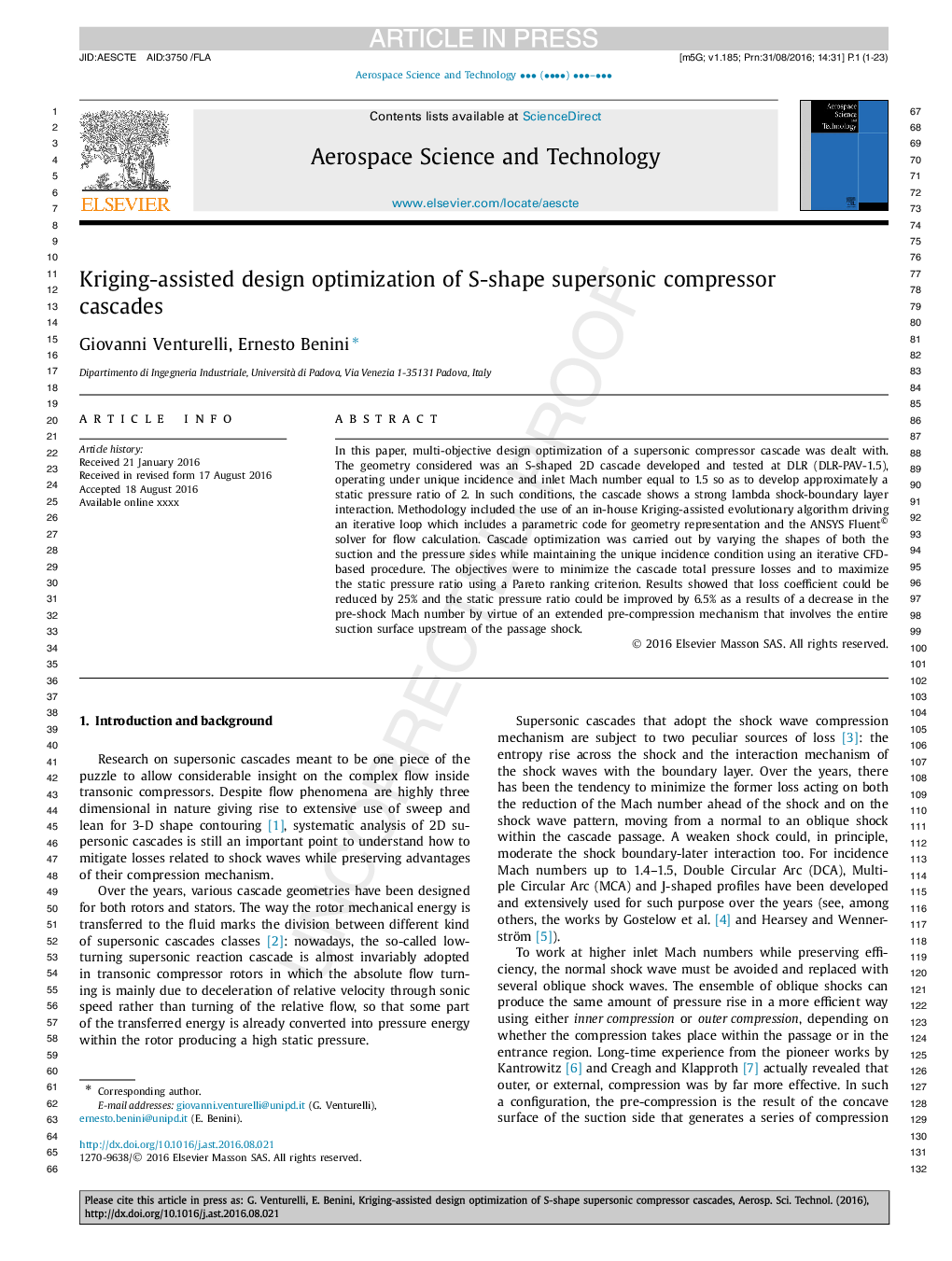| Article ID | Journal | Published Year | Pages | File Type |
|---|---|---|---|---|
| 8058454 | Aerospace Science and Technology | 2016 | 23 Pages |
Abstract
In this paper, multi-objective design optimization of a supersonic compressor cascade was dealt with. The geometry considered was an S-shaped 2D cascade developed and tested at DLR (DLR-PAV-1.5), operating under unique incidence and inlet Mach number equal to 1.5 so as to develop approximately a static pressure ratio of 2. In such conditions, the cascade shows a strong lambda shock-boundary layer interaction. Methodology included the use of an in-house Kriging-assisted evolutionary algorithm driving an iterative loop which includes a parametric code for geometry representation and the ANSYS Fluent© solver for flow calculation. Cascade optimization was carried out by varying the shapes of both the suction and the pressure sides while maintaining the unique incidence condition using an iterative CFD-based procedure. The objectives were to minimize the cascade total pressure losses and to maximize the static pressure ratio using a Pareto ranking criterion. Results showed that loss coefficient could be reduced by 25% and the static pressure ratio could be improved by 6.5% as a results of a decrease in the pre-shock Mach number by virtue of an extended pre-compression mechanism that involves the entire suction surface upstream of the passage shock.
Related Topics
Physical Sciences and Engineering
Engineering
Aerospace Engineering
Authors
Giovanni Venturelli, Ernesto Benini,
